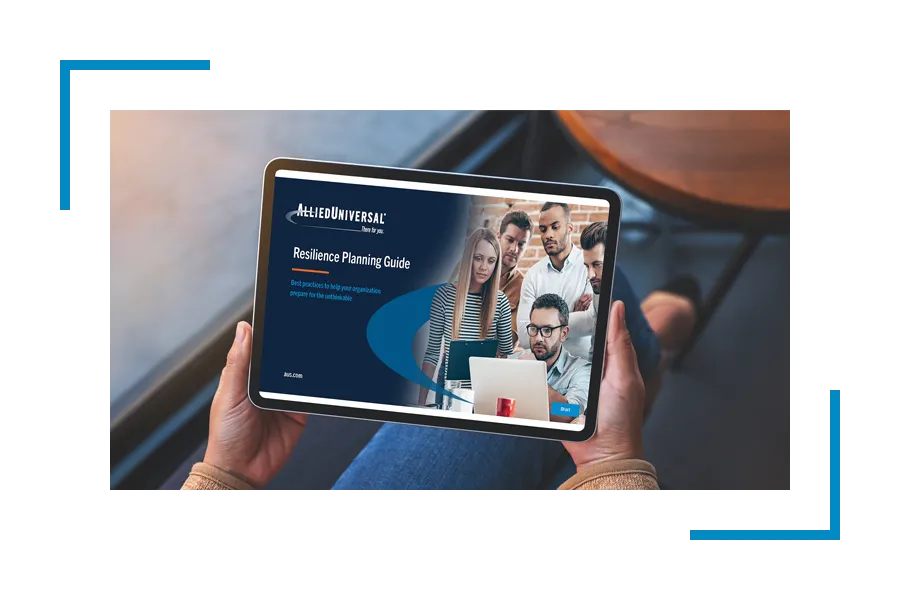-

Stay Ready for Threats
Advanced technology systems supported by real-time analytics helps airports, airlines, and airport authorities stay ahead of threats and identify suspicious or unauthorized activities before they impact operations. When threats are detected early, organizations are able to take necessary actions to prevent security breaches.
-

Crisis Management Readiness
Prepare for the unexpected with our robust physical security infrastructure. Built for rapid deployment and coordinated response, our systems support effective crisis management, risk mitigation, and asset protection.
-

24/7/365
Risk never sleeps, and neither do our security and risk mitigation technology solutions. Our technology provides real-time data and supports protection around the clock, to enhance your readiness. Our systems help airports, airlines, and airport authorities effectively handle potential threats to minimize risks and support safeguarding of resources.
Download Your Crisis Planning Playbook
Throughout this guide, we’ll delve into the principles of resilience and equip you with tips and best practices to create a culture that values preparedness at all levels.
NOTE: By completing this form, you agree to receive updates from Allied Universal via email. Your data will not be passed on to third parties, and you may unsubscribe from these communications at any time.
Benefit from the advantages of working with Allied Universal:
-
Technology Adds a Critical Layer in Business Resiliency
A holistic approach to emergency planning considers how to best leverage and integrate people, processes, and technology. Identifying technology-based solutions to address vulnerabilities is essential.
-
Intrusion Detection
Limiting and controlling access to your property and people is a core element of effective security and emergency planning. Our systems help you effectively deter, detect, and respond to potential threats.
-
Access Control
Stay in control of comings and goings with sophisticated access control systems. In an emergency, knowing you have the ability to lock down your facility is critical.
-
Video Solutions
Video surveillance is a highly visible solution that has proven efficient in deterring would-be threat actors and recording and providing real-time data to enhance situational awareness and response.
-
Visitor and Identity Management
Limiting or denying access to secure areas of your business is critical, but never more so than during an emergency.
-
Monitoring and Response
Reliable monitoring, whether through on-site solutions such as a local security operations center or remotely through the Allied Universal Monitoring and Response Center (MaRC), positions you to respond quickly to a threat.






















